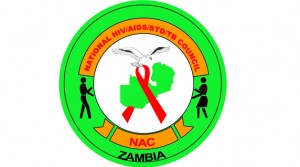 By CHUSA SICHONE –
By CHUSA SICHONE –
THE National Aids Council (NAC) says the HIV/AIDS prevalence rate is likely to go up in rural areas where road construction works mining activities are taking place.
NAC programmes director Harold Witola said the two sectors were labour intensive and involved people migrating from one area to another.
He said NAC was now targeting to intensify HIV/AIDS sensitisation programmes in the wake of increased
construction works in various parts of the country.
Dr Witola said this in Lusaka when he received a six-member delegation from the Tanzania Commission for AIDS led by Florens Turuka, that country’s permanent secretary in the prime minister’s office.
Dr Witola informed the delegation that the Government had embarked on an ambitious road projects and that mines were mushrooming in the country.
“But we are worried that those communities in the outlying rural areas where the infection has been low, because of the road works and the mines, we might start seeing infections going up.
“And so we really want to focus on developing synergies with these development sectors so that we work together in terms of HIV prevention,” he said.
He said Western Province had a ‘strange phenomenon’ as it had the highest HIV prevalence rates at 15.2 per cent compared to other rural areas in the country.
“This province is typically rural. It is the only province that has a high prevalence compared to the other rural provinces. So you will notice that the rural provinces, Eastern, Northern, North-Western are usually on the lower side, but we have a very strange phenomenon in Western Province.
“We have been trying to establish what the reason for that scenario would be. Probably we might be doing a study soon to just find out what could be happening there,” he said.
He also described inter-generational sex, involving older men, usually successful people aged between 35 and 40, having intercourse with young girls mostly in secondary schools and colleges, as worrisome.
Dr Witola said the men in that age group were contributing to the sharp increase
in HIV prevalence rates among girls aged between 15 and 24.
He said NAC, in its strategic plan currently being developed, also sought to focus on strengthening communities for them to offer services aimed at decongesting health centres as well as focus on high impact interventions areas.






